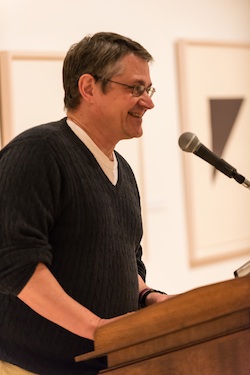The Art of War
[Ellsworth] Kelly heard about the 23rd [Special Troops] while he
was still an art student ... When he joined [in 1943], work was
already underway on developing fake artillery and vehicles.
—Artists of Battlefield Deception. NPR.
Before there were his pears,
his leaves and lemons,
and the flower parts linked
as black-ink hearts,
Ellsworth Kelly created phantoms:
burlap bombers and jeeps spun
from gunmetal sheets, uniforms
hung like washing on barbwire,
and tanks so delicate
as to shudder in soft breezes;
the gentlest of armies
offering itself as a target,
a sacrifice to real weapons
of consummate violence.
What more could be asked
of art during wartime?
And perhaps some idle Nazi
gunner studies this work from
a distance of miles and sees
something more than
mere artifice;
perhaps he knows genius
when he sees it, and sits
for a few moments transfixed,
rocking back and forth
in his cracked leather chair,
and maybe he forgets
himself and his grim duty,
and the world melts away,
and he is unconscious,
bodiless and simple:
there is only
Ich and Du, Thou, no It,
no German or Jew, no Other,
as his mind intuits
the first draft of an art
that just might come to pass:
silvered squares, ellipses
in blue, rivers of sticks,
Red Gray Orange
a vocabulary of form
and color radically primary,
nascent and pulsing,
but then he wakes,
shrugs, adjusts the sights
of his long barreled gun
to that far field
and lobs a shell,
blows it up,
but not away.
—Mark Kliewer


